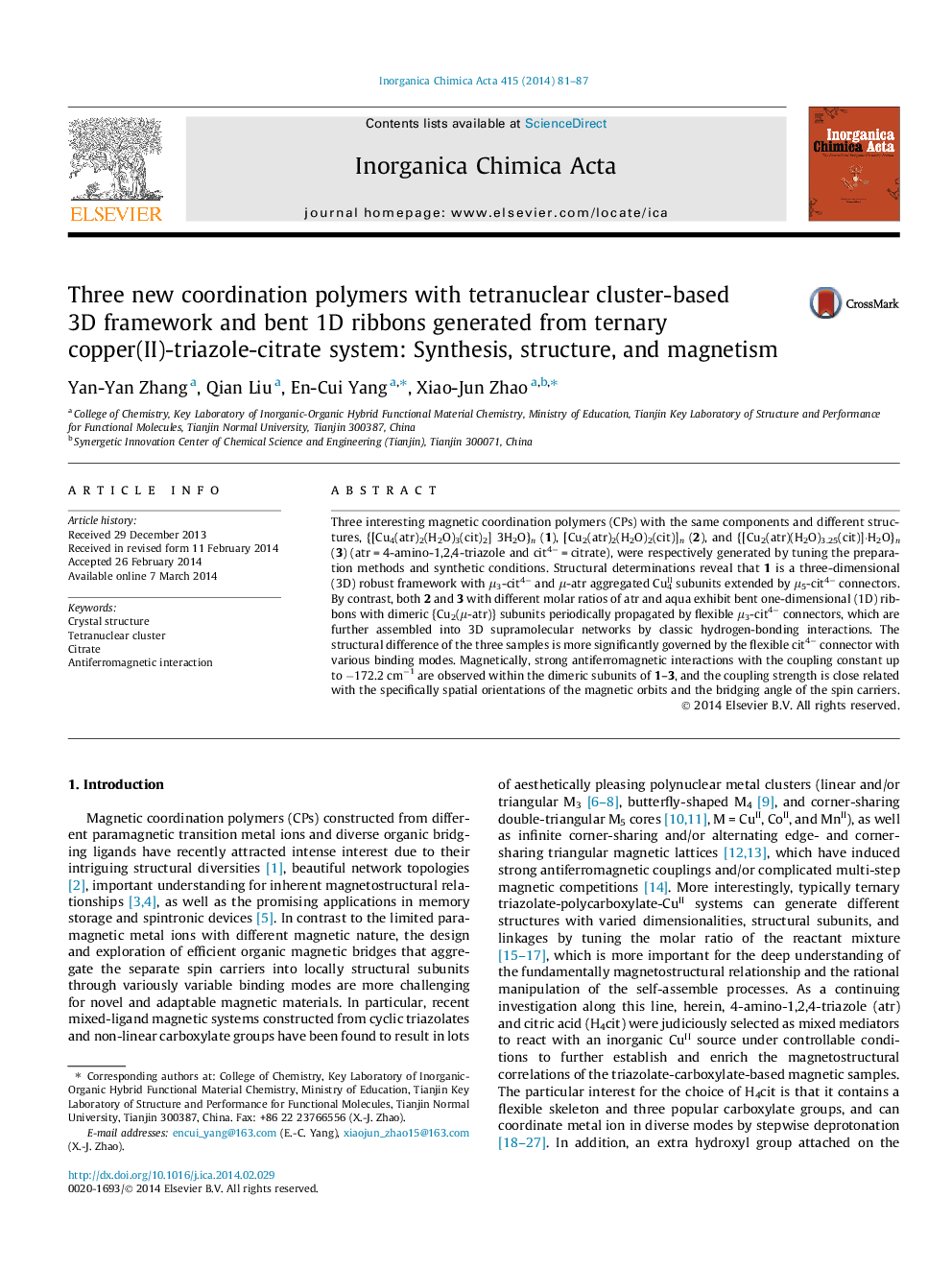| کد مقاله | کد نشریه | سال انتشار | مقاله انگلیسی | نسخه تمام متن |
|---|---|---|---|---|
| 1305611 | 1499173 | 2014 | 7 صفحه PDF | دانلود رایگان |

• Three CPs were obtained in ternary 4-amino-1,2,4-triazole-citric acid-CuII system by tuning preparation conditions.
• These CPs are one {Cu4(μ-atr)2(μ3-cit)2}-based 3D framework and two {Cu2(μ-atr)}-derived 1D ribbons.
• Antiferromagnetic interactions with −172.2 < J < −141.3 cm−1 were mediated in the dimeric subunits.
Three interesting magnetic coordination polymers (CPs) with the same components and different structures, {[Cu4(atr)2(H2O)3(cit)2] 3H2O}n (1), [Cu2(atr)2(H2O)2(cit)]n (2), and {[Cu2(atr)(H2O)3.25(cit)]·H2O}n (3) (atr = 4-amino-1,2,4-triazole and cit4− = citrate), were respectively generated by tuning the preparation methods and synthetic conditions. Structural determinations reveal that 1 is a three-dimensional (3D) robust framework with μ3-cit4− and μ-atr aggregated CuII4 subunits extended by μ5-cit4− connectors. By contrast, both 2 and 3 with different molar ratios of atr and aqua exhibit bent one-dimensional (1D) ribbons with dimeric {Cu2(μ-atr)} subunits periodically propagated by flexible μ3-cit4− connectors, which are further assembled into 3D supramolecular networks by classic hydrogen-bonding interactions. The structural difference of the three samples is more significantly governed by the flexible cit4− connector with various binding modes. Magnetically, strong antiferromagnetic interactions with the coupling constant up to −172.2 cm−1 are observed within the dimeric subunits of 1–3, and the coupling strength is close related with the specifically spatial orientations of the magnetic orbits and the bridging angle of the spin carriers.
Three magnetic coordination polymers with the same components and different structures, a {Cu4(μ-atr)2(μ3-cit)2}-based 3D framework and two {Cu2(μ-atr)}-derived 1D ribbons, were obtained, and exhibit strong antiferromagnetic interactions with the coupling constants varied from −172.2 to −141.3 cm−1.Figure optionsDownload as PowerPoint slide
Journal: Inorganica Chimica Acta - Volume 415, 1 May 2014, Pages 81–87